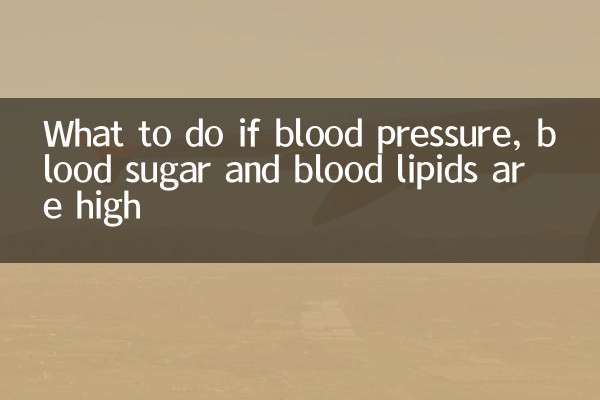What's going on with a child's blood sanitation
In the past 10 days, the topic of children's health has been very popular on major social platforms and medical forums, especially the search volume of the keyword "Children's blood are high" has increased significantly. Many parents expressed concerns about this. This article will combine popular discussions and medical knowledge across the Internet to analyze the causes, symptoms and response measures of children's high blood dysfunction.
1. What is blood sanitation?

Blood sedimentation (erythrocyte sedimentation rate, ESR) refers to the rate at which red blood cells sink within a specific time and is one of the commonly used inflammatory indicators in clinical practice. An increased vascular subsidence value usually indicates inflammation, infection, or other pathological states in the body.
| Age group | Normal blood sedimentation range (mm/h) |
|---|---|
| Newborn | 0-2 |
| child | 3-13 |
| teenager | 4-15 |
2. Common reasons for high blood dysfunction in children
According to recent discussions and case analysis by pediatric experts, the main reasons for elevated blood sediment in children include:
| Cause classification | Specific diseases/factors | Percentage (reference) |
|---|---|---|
| Infectious Diseases | Tonsillitis, pneumonia, urinary tract infection | 45% |
| Immune system diseases | Idiopathic arthritis in young age, Kawasaki disease | 25% |
| Blood system diseases | Anemia, leukemia | 10% |
| Other factors | Response after vaccination, physiological fluctuations | 20% |
3. Recent hot discussion cases
1.Blood sedimentation rises after vaccination: A user of a parenting forum shared that a physical examination was found to be 28mm/h in a physical examination three days after the child was vaccinated, which triggered more than 200 discussions. Experts responded that this is a common temporary reaction.
2.Repeated fever with high blood: In the Weibo topic #Fever caused by unknown reasons#, many parents mentioned that the child's blood sedimentation lasted 40-60mm/h, and was eventually diagnosed with Kawasaki disease or EB virus infection.
4. Symptom combinations that need to be vigilant
A mild increase in blood subsidence may not be too worried, but if the following symptoms are combined, you should seek medical treatment in time:
| Accompanied symptoms | Possible disease | Emergency |
|---|---|---|
| Continuous high fever (>3 days) | Bacterial infection/Kawasaki disease | ★★★ |
| Swelling and pain in the joints | Juvenile arthritis | ★★ |
| Skin red spots | Allergies/autoimmune diseases | ★★ |
| Weight loss | Chronic infection/tumor | ★★★ |
5. Parental response guide
1.The first time I found blood sank: It is recommended to review after 1-2 weeks to rule out detection errors or physiological fluctuations.
2.Dynamic monitoring: Combined with C-reactive protein (CRP), blood routine and other examinations, observing trends is more important than single-time values.
3.Record symptoms: It is recommended that parents record their children's temperature changes, diet and sleep, and provide doctors with a detailed medical history.
4.Avoid overtreatment: The director of the pediatric department of a tertiary hospital emphasized on a short video platform that about 30% of mild elevated blood sedimentation does not require special intervention.
6. Latest medical views
The 2023 Chinese Journal of Pediatrics published an article pointing out that children's blood sedimentation testing should be paid attention to:
• Effect of blood collection time: afternoon value may be 3-5mm/h higher than in the morning
• Physiological factors: After strenuous exercise and menstrual period, girls may have temporary elevation
• Differences in inspection methods: There is an error of about ±2mm/h in different hospital instruments
Conclusion
As a non-specific indicator, parents do not need to panic excessively. Recent hot online cases have shown that elevated blood sedimentation in most children is a common curable disease after standardized examination. It is recommended to combine clinical manifestations and comprehensive judgments on other examinations and individualized treatments according to the doctor's instructions.

check the details

check the details